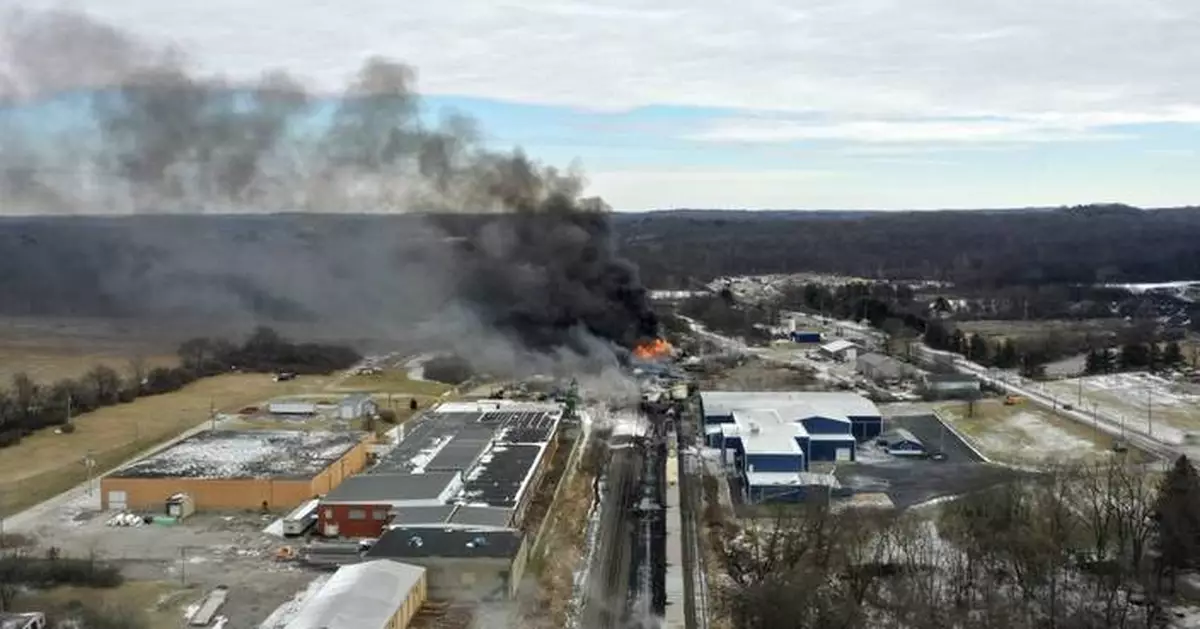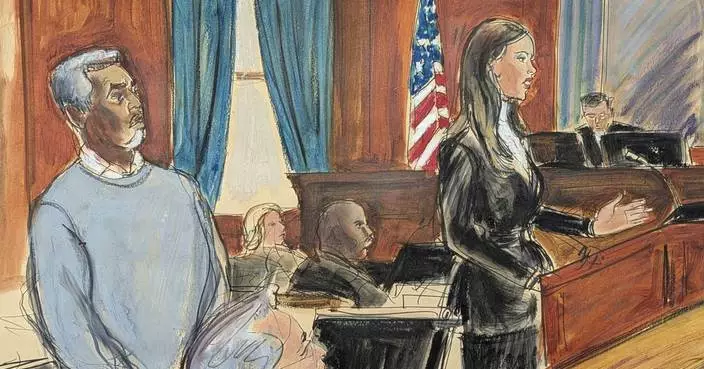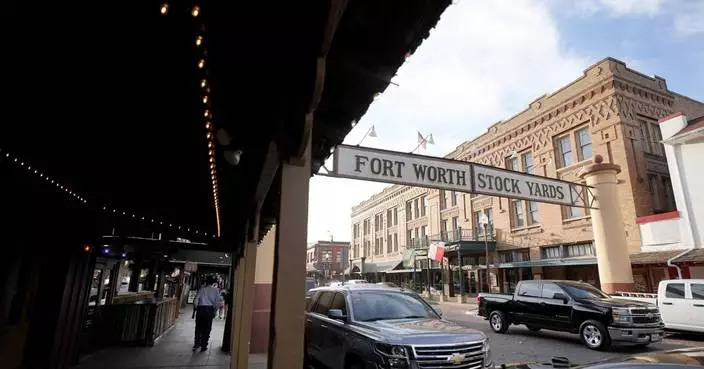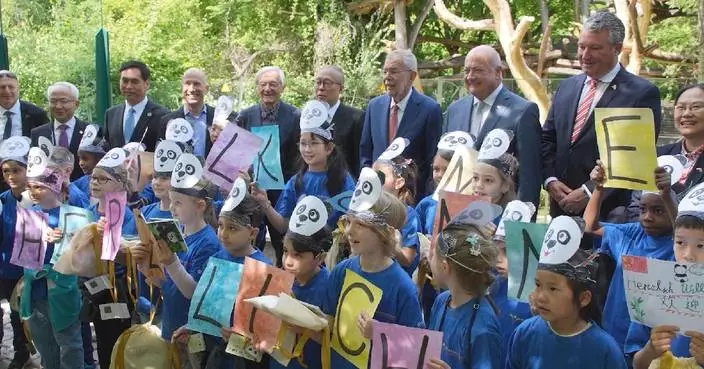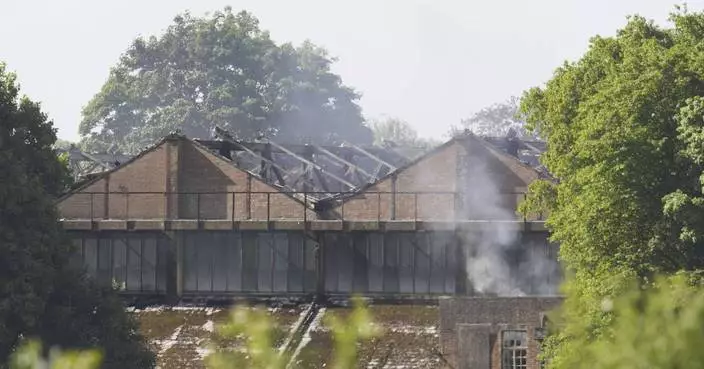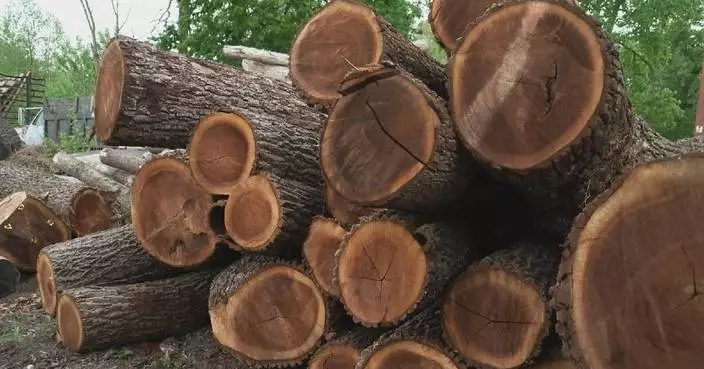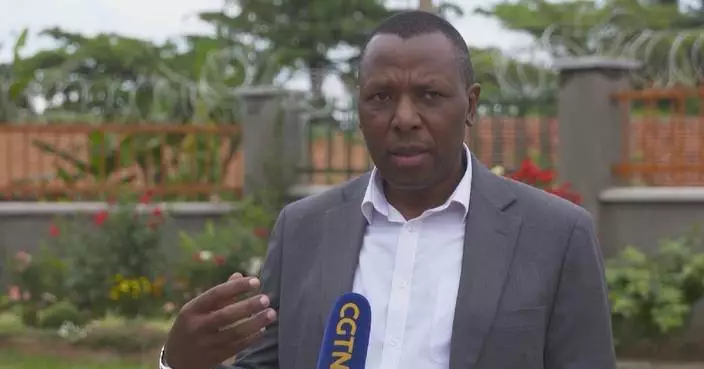The company that owned the railcar that caused the devastating East Palestine train derailment in 2023 won't have to help pay for the $600 million settlement Norfolk Southern agreed to with residents.
An Ohio jury decided Wednesday that GATX isn't liable for the settlement even though the failure of a bearing on its railcar carrying plastic pellets caused the pileup on Feb. 3, 2023. GATX has maintained Norfolk Southern operated and inspected the train and all the cars and was responsible for delivering the cargo safely.
“GATX is pleased with the trial outcome, which affirms what we have known for some time: Norfolk Southern alone is responsible for the derailment and resulting damage in East Palestine,” the company said in a statement.
Norfolk Southern called the verdict disappointing but said it won't affect the railroad's commitments to everyone affected by the derailment.
“For more than two years, Norfolk Southern has paid the costs related to the derailment while acknowledging and acting on our own responsibility for the accident. Our belief has always been that GATX shares in that responsibility and should also be held to account,” the railroad said in a statement.
After the train derailed in East Palestine, an assortment of chemicals spilled and caught fire. Then three days later, officials blew open five tank cars filled with vinyl chloride because they feared those cars might explode, generating a massive black plume of smoke that spread over the area and forcing evacuations.
Norfolk Southern lost a similar lawsuit last year when it tried to force GATX and OxyVinyls, which made the vinyl chloride, to help pay for the environmental cleanup after the derailment that has cost the Atlanta-based railroad more than $1 billion. It made similar arguments in this trial.
These lawsuits have no effect on how much money residents or the village of East Palestine will receive from their settlements with the railroad. This cases only affect which company writes the check.
Last week, OxyVinyls agreed to a settlement with Norfolk Southern in this lawsuit over the class-action settlement after the railroad's lawyers raised questions about the inconsistent information the chemical company provided about whether it was necessary to perform the vent-and-burn operation and release the vinyl chloride. The details of that settlement weren't released.
The National Transportation Safety Board confirmed in its investigation that the vent-and-burn operation was unnecessary because the tank cars were starting to cool off and the railroad failed to listen to the advice from OxyVinyls’ experts or share their opinions with the officials who made the decision.
The railroad said GATX should have done more to take care of its railcar, particularly after it was surrounded by floodwaters, which could have damaged its bearings.
But GATX said it complied with all the relevant regulations for taking care of its railcars. The company said that even if the car was damaged six years earlier by standing parked in the middle of floodwaters from Hurricane Harvey, the railroad should have spotted the problem and repaired it, sending GATX the bill for the repairs.
The National Transportation Safety Board said the crash was caused by the failure of an overheating bearing on GATX’s railcar. The railroad’s sensors spotted the bearing starting to heat up in the miles before the derailment, but it didn’t reach a critical temperature and trigger an alarm until just before the derailment. That left the crew little time to stop the train.
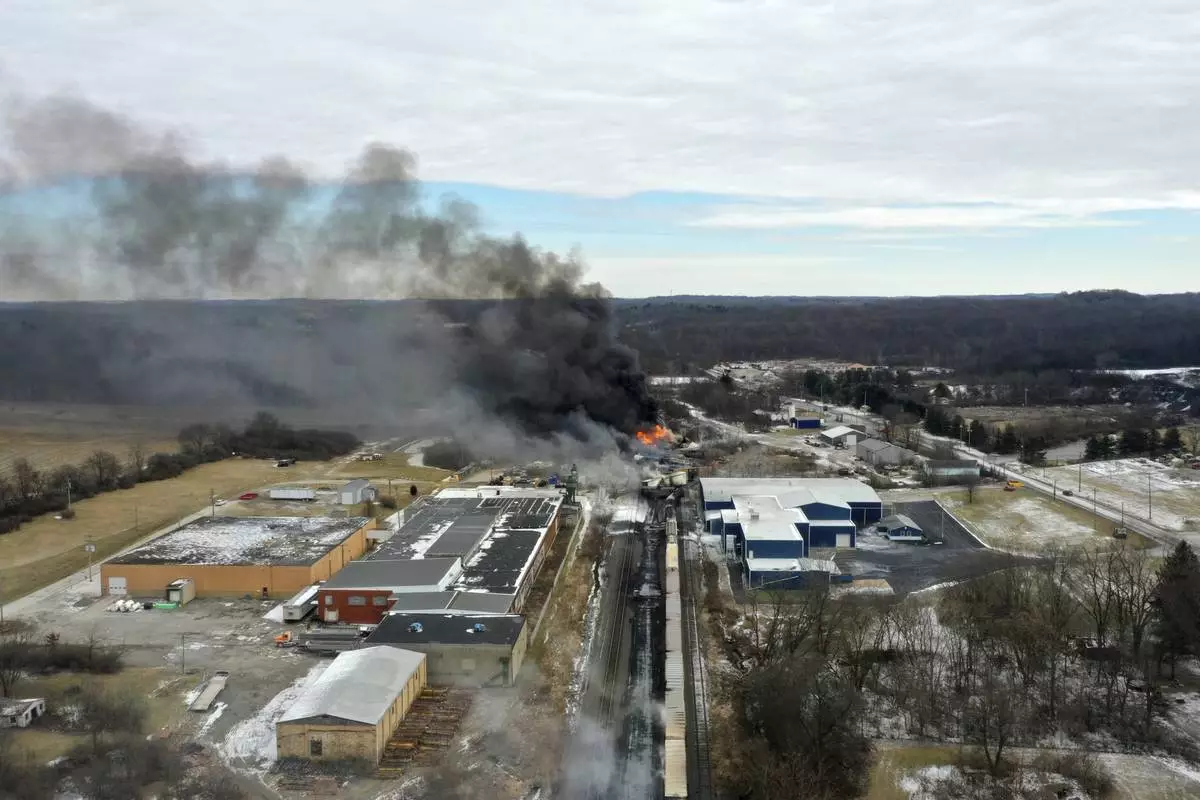
FILE - This photo taken with a drone shows portions of a Norfolk Southern freight train that derailed in East Palestine, Ohio, Feb. 4, 2023. (AP Photo/Gene J. Puskar, File)
After a wildfire decimated a California high school’s newsroom, destroying its cameras, computers and archived newspapers spanning six decades, one of the first offers of help that its journalism adviser received came from the other side of the country.
Claire Smith, founding executive director of Temple University's sports media center, had known Lisa Nehus Saxon since they helped carve out a place for women journalists in Major League Baseball more than 40 years ago. They’d supported each other through the days of being barred from locker rooms, and now with much of Palisades Charter High School damaged, Smith wanted to be there for her friend again.
“I just thought, ‘What can we do? How can we help with healing?’” Smith said.
Earlier this week, she traveled from Philadelphia to deliver the result of that offer: a university paper featuring the high school students’ articles.
Across nearly a dozen pages, the insert showcased articles on price gouging in the rental market after the wildfire and the school returning to in-person lessons, along with poignant firsthand accounts of losing everything to the fire. There were also poems and hand-drawn pictures by students from Pasadena Rosebud Academy, a transitional kindergarten through eighth-grade school in Altadena, California, that was destroyed in the fire.
Wildfires in January ravaged the Los Angeles area, wiping out nearly 17,000 structures including homes, schools, businesses and places of worship.
The Palisades high school, made up of about 3,000 students in Los Angeles, saw about 40% of its campus damaged and had to move temporarily into an old Sears building. Nehus Saxon estimated that around a quarter of its newspaper staff members lost their homes, with some forced to move out of the community and switch schools.
This project, she and Smith said, was a way to give students a project to focus on after the tragedy while also providing them a place to tell a larger audience the experience of their community.
Smith said she thought the project would be healing for the students “but also give them something that they could hold in their hands and, when they grow up, show their children and grandchildren."
Inside a basement classroom in Santa Monica on Wednesday, Smith and Samuel O’Neal, The Temple News’ editor-in-chief, handed out the papers to the high school staff.
It was the first time they had seen their Tideline articles in print, as the paper had moved online years ago due to the cost.
Kate Swain, 18, a co-editor-in-chief for the paper, said it felt surreal to finally flip through the printed pages.
“Because of everything that we’ve gone through together, everything that we’ve had to persevere through and everyone’s had all these personal things that they’ve been dealing with," she said. "And yet simultaneously, we’ve been pouring all this time and energy and all of our passion for journalism into writing these articles.”
Gigi Appelbaum, 18, a co-editor-in-chief of the paper who lost her home in the fire, said the project felt especially distinct because it involved people thousands of miles away.
“The fact that people from across the country are aware of what's going on with us and emphasize with our situation and want to get our voices out there, it’s really special,” said Appelbaum, who has been on the paper for four years.
One of the things she lost in the fire was a box filled with important cards and messages. She said she plans to store her copy in a new box as she works to restart the collection.
Smith and Nehus Saxon met in 1983 during a game between the Angels and Yankees in Anaheim, California. Nehus Saxon said she walked over to Smith to introduce herself and found her hustling to meet a deadline.
“Who knew that little introduction would blossom into this,” said Nehus Saxon.
In the years since, they’ve traveled to London together for Major League Baseball’s first games in Europe, and they cried together in 2017 as Smith became the first woman to win the Baseball Writers’ Association of America’s Career Excellence Award.
“We don’t talk every week,” Nehus Saxon said. “Sometimes we can go, you know, months and months without talking. But all we have to do is send each other a text message and we know the other will be there immediately.”
That bond was made all the more clear when Nehus Saxon heard from Smith as fire engulfed her community. Her home was only three blocks from the school. While it survived the blaze, it’s filled with led laden ash and may not be safe to live in for years.
But with the help of Smith, she and her students have been able to move forward and produce the final edition of the school year. After the papers were handed out, Nehus Saxon kept one for the school's archive.
“When you’ve lost everything you’ve got to start somewhere,” Smith said.
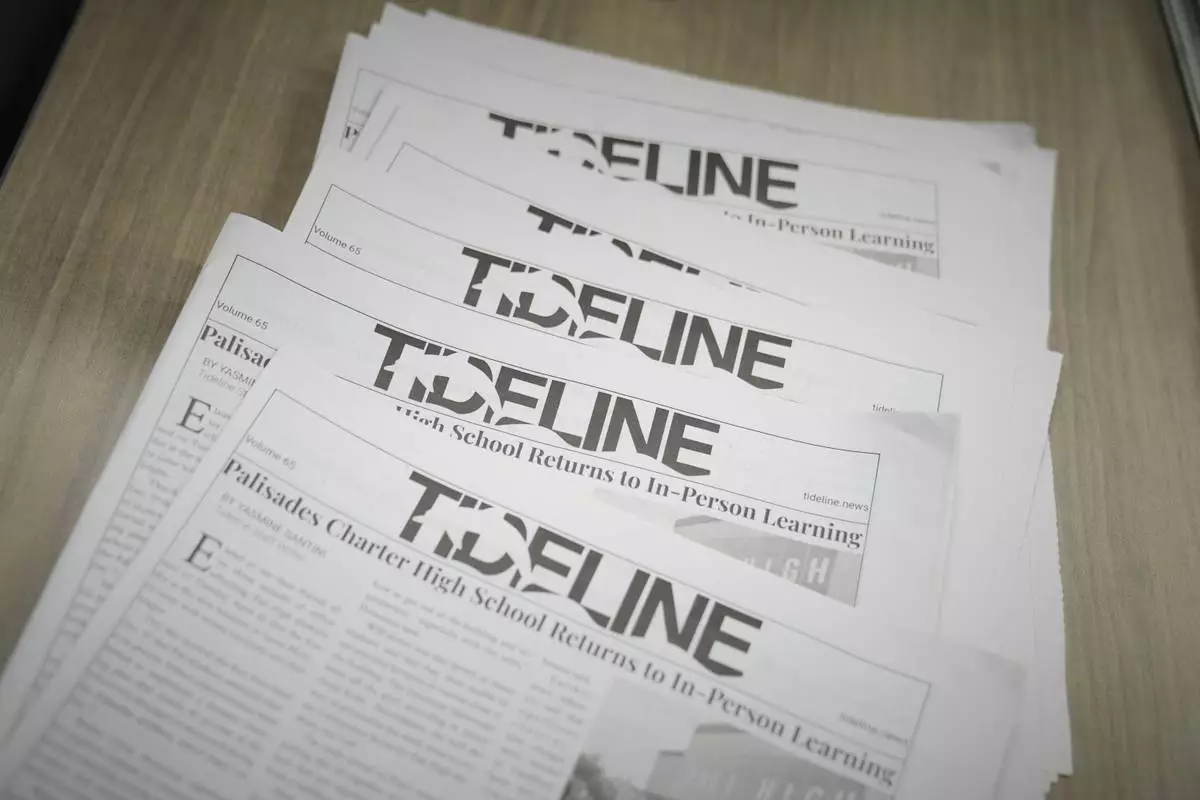
Copies of Tideline, Palisades High School's student newspaper, are placed on a table in their newsroom, Wednesday, May 14, 2025, in Santa Monica, Calif. (AP Photo/Marcio Jose Sanchez)
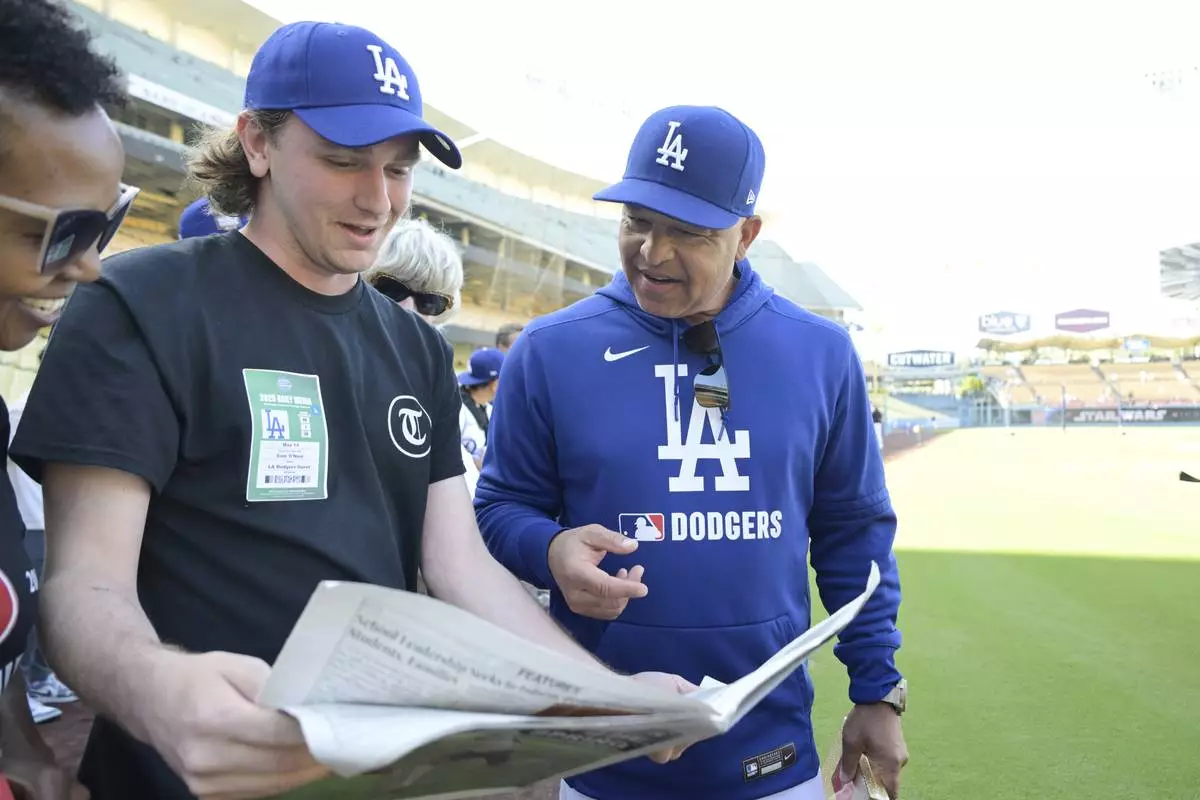
Samuel O'Neal, left, editor-in-chief of Temple News, shows a copy of his school's publication to Los Angeles Dodgers manager Dave Roberts during a visit to Dodger Stadium, Wednesday, May 14, 2025, in Los Angeles. AP Photo/Jayne Kamin-Oncea)

Members of of the Palisades High School newspaper staff, from left to right, Cloé Nourparvar, Gigi Appelbaum, and Kate Swain, hold a copy of the school's publication, which was printed in Philadelphia, Wednesday, May 14, 2025, in Santa Monica, Calif. (AP Photo/Marcio Jose Sanchez)

Claire Smith, founding executive director of Temple University's sports media center, center, and Samuel O'Neal, left, editor-in-chief of the Temple News, deliver copies of the Palisades High School newspaper to staff, Wednesday, May 14, 2025, in Santa Monica, Calif. (AP Photo/Marcio Jose Sanchez)
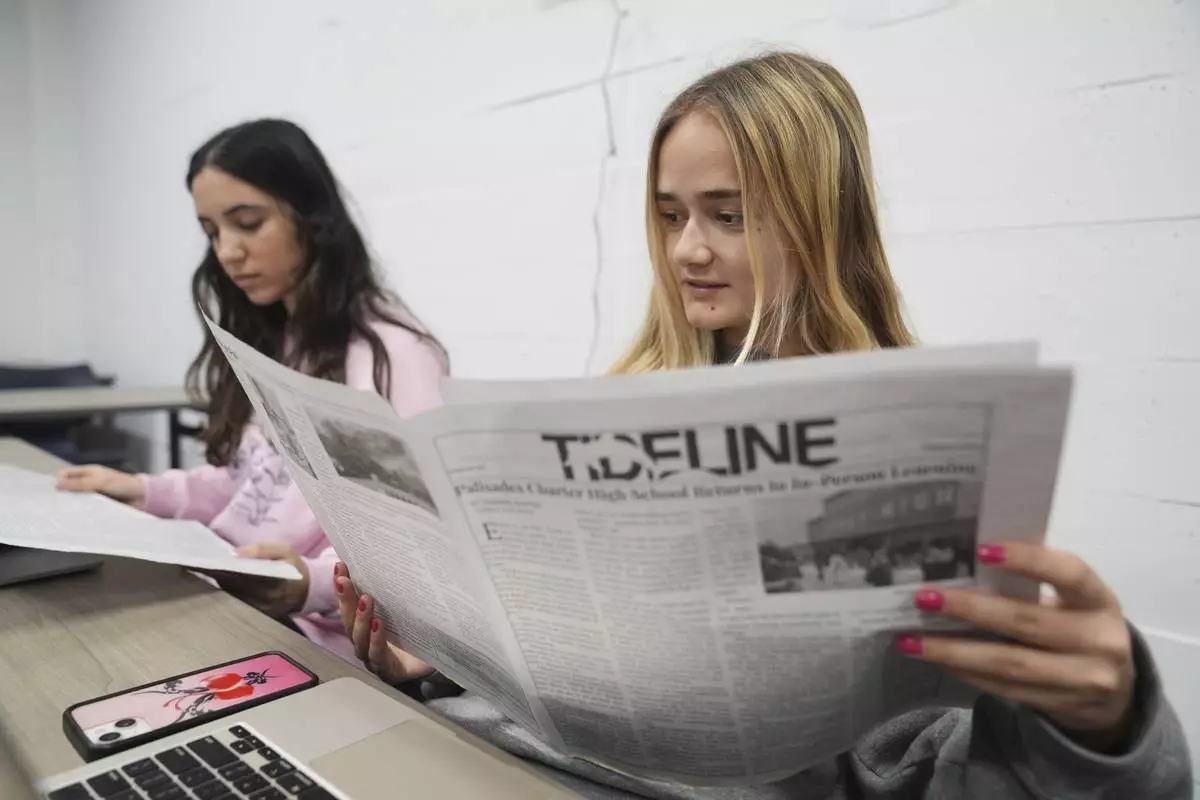
Staff members of Tideline, Palisades High School's newspaper, Sophia Masserat, left, and Eve Keller read a copy of the publication, freshly delivered from Philadelphia, Wednesday, May 14, 2025, in Santa Monica, Calif. (AP Photo/Marcio Jose Sanchez)
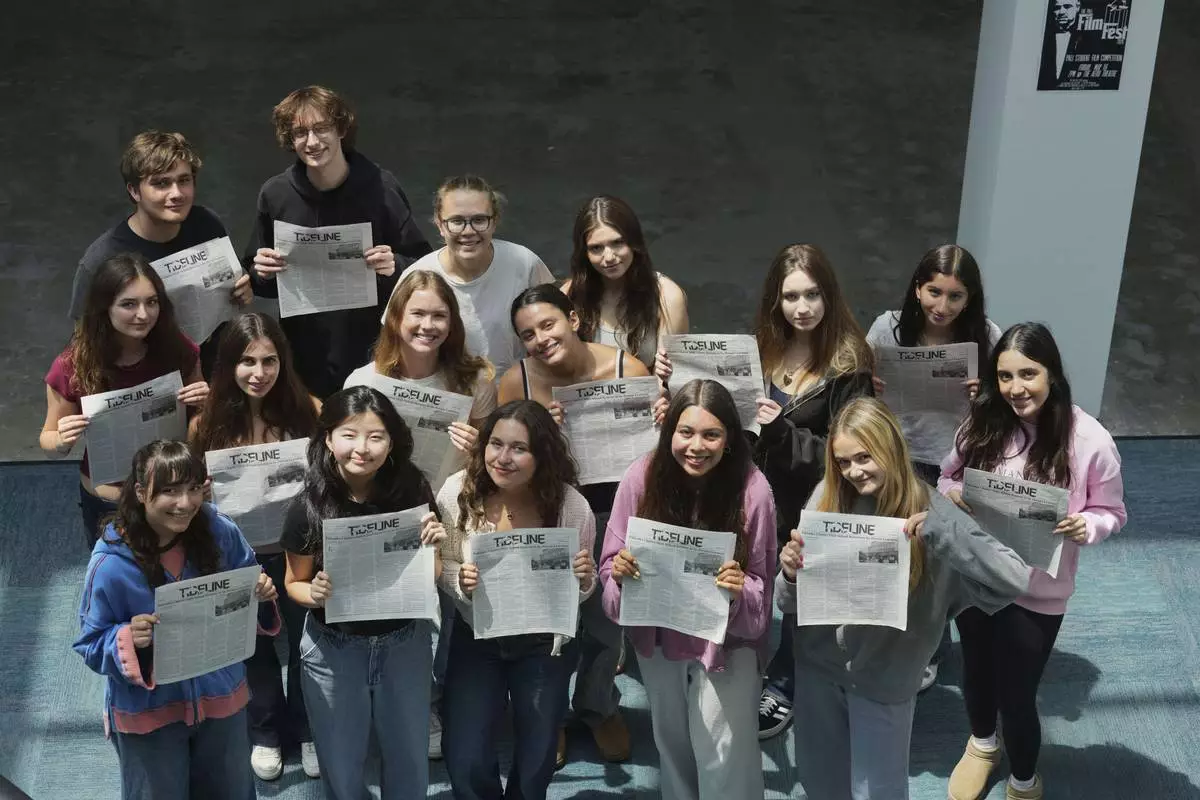
Members of Tideline, the student newspaper, pose for a group photo showing the publication at the interim location for Palisades High School Wednesday, May 14, 2025, in Santa Monica, Calif. (AP Photo/Marcio Jose Sanchez)



